Conference by Damian Mooney – Engineering solutions for marine science and conservation
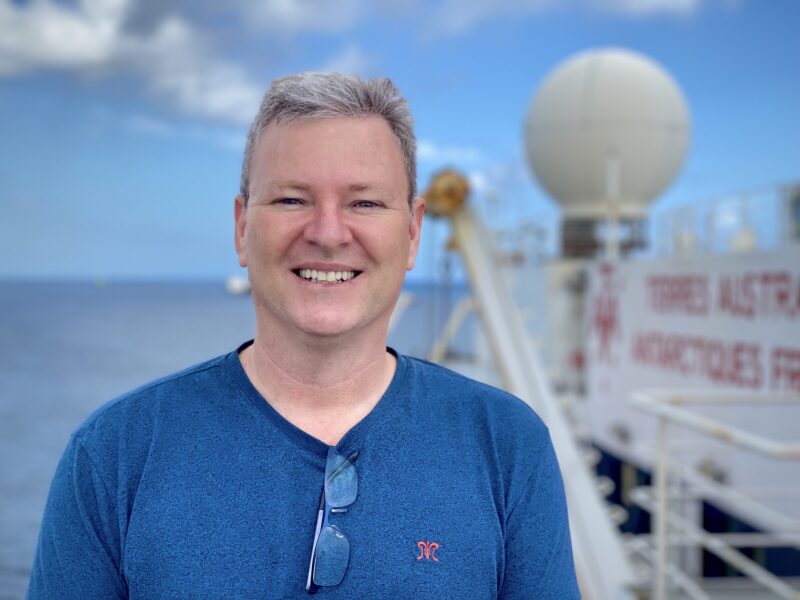
April 28th, 2022, R/V Marion Dufresne, Mozambique Channel
Authors: Luis Chomienne, Illona Ribot, Christophe Mocquet
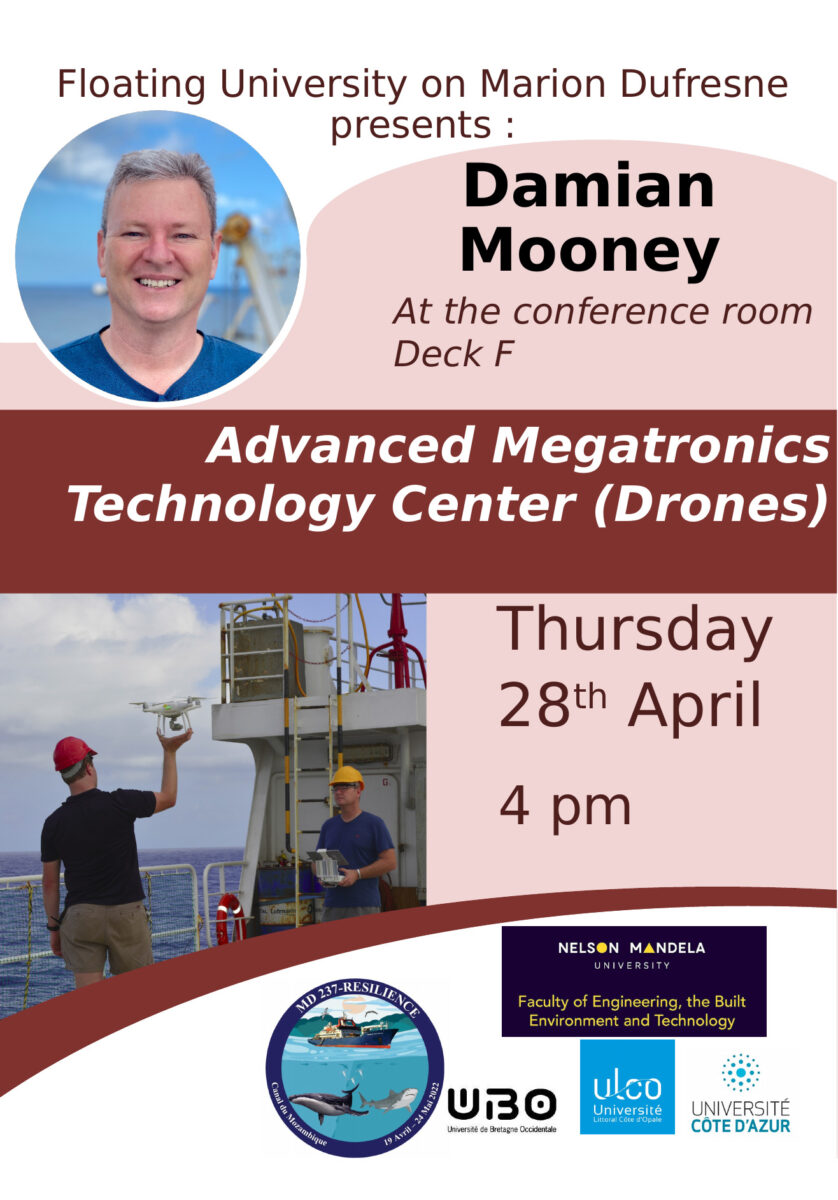
Damian Moorey is an engineer at Nelson Mandela University in South Africa. He joined the Autonomous Operations Group (AOG) in 2017, consisting of drone pilots, test pilots as well as engineers. This team provides engineering solutions to the university’s science teams, as well as support for master’s and PhD student projects. According to Damian, “If you need something, we create it.” On the ship, they stand ready to send their drone when marine mammals are reported. Their drone, Snotbot, is sent to collect mucus from whale breaths. This drone has already proven itself with this team in South Africa (see Mandy’s talk).
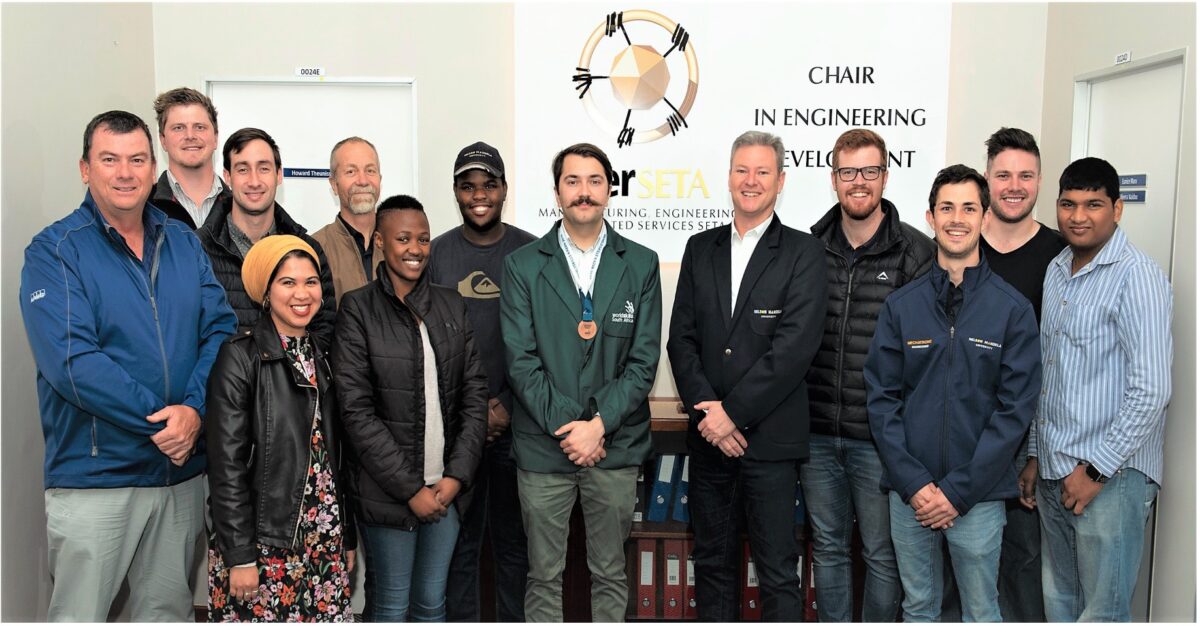

In South Africa, the budget is limited, so they are working on drones that are much cheaper than planes. One of their inventions is a radio-controlled aircraft for delivering parcels at sea using a GPS system and an automatic search system. This one has been tested successfully but due to local regulations, the drone could not be tested at sea… Another drone is for home security because in South Africa, many houses have an alarm system but the reaction of the security guards is too slow to stop the burglars. The purpose of this drone is to be deployed automatically from the neighborhood to detect the burglars and follow them to guide the security agents.
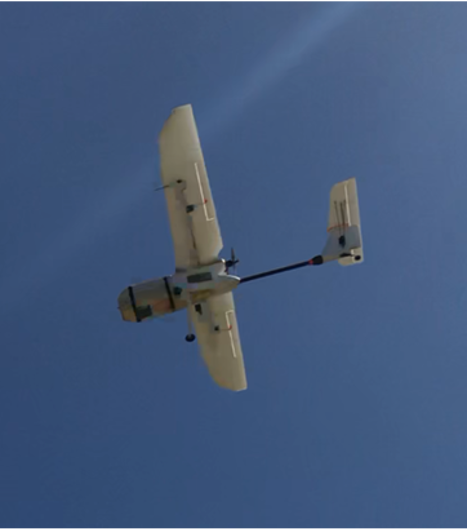
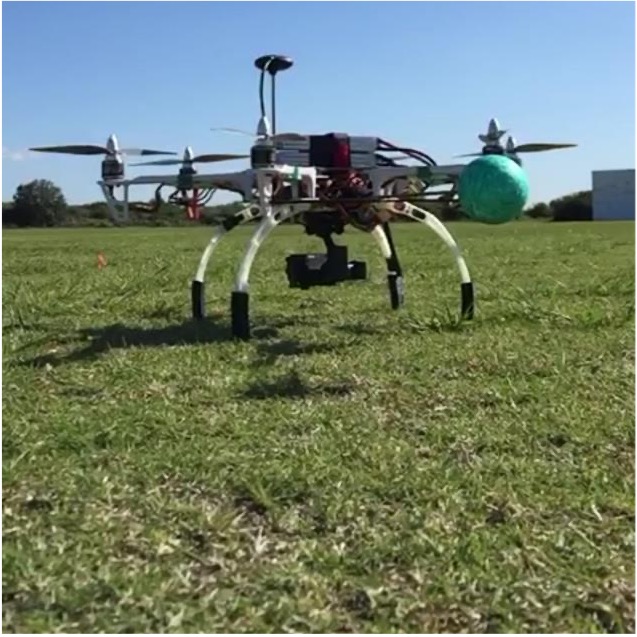
They also have many hybrid aircraft projects. For example, they are placing solar panels on the planes, increasing their autonomy to more than 7 hours, of particular use for marine surveillance. They are working on the amazing project of a vertical take-off aircraft (VTOL aircraft) whose fast response electric motors make the aircraft particularly stable. This engineering jewel combines electrical and petroleum energy for optimal performance. The efficiency of the energy produced by petroleum allows the VTOL to have a better endurance than that produced by lithium batteries. Another incredible invention is a super short take-off aircraft (Super STOL), carrying several small propeller engines on the wings and vertical stabilizer, increasing the wind speed on the wings, thus creating more lift. The Super STOL can thus fly at low speed.
Finally, as part of marine surveillance, particularly to monitor fish poaching, the AOG provided a motorized glider equipped with a camera for continuous remote monitoring for approximately 24 hours.
 Attention, vous utilisez un navigateur peu sûr !
Attention, vous utilisez un navigateur peu sûr !